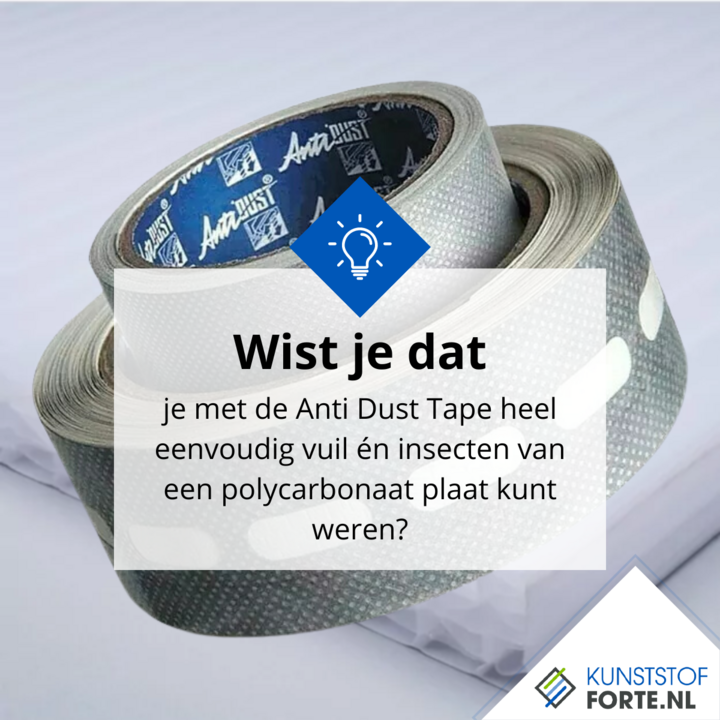Description
Anti-dust tape can come in two variants: a sealed variant and a ventilated variant. Using the right variant depends on the specific application and the desired effects, such as protection against dust or maintaining airflow.
Sealed anti-dust tape
- Application: This variant is used to completely seal openings. It prevents air or dust from entering at all. It is ideal for situations where maximum protection from dust, dirt and moisture is needed, such as at seams of windows, doors or vents that you want to temporarily seal off.
- Advantages:
- Full protection against dust, moisture and dirt.
- Helps prevent intrusion of insects and moisture.
- Suitable for rooms where air circulation is not required.
Ventilating anti-dust tape
- Application: This type of tape is designed to keep dust out while still allowing some airflow. It is often used in applications where ventilation is essential, such as when sealing polycarbonate sheets in conservatories or roof structures. This ventilation allows condensation to be prevented without dust entering.
- Advantages:
- Allows air to circulate while blocking dust.
- Reduces condensation in enclosed spaces.
- Ideal for applications in, for example, conservatories, canopies, and electronic devices that need to dissipate heat.
Both types of tapes have their own advantages, depending on what exactly you want to achieve: complete sealing or, on the contrary, dust protection with ventilation.
